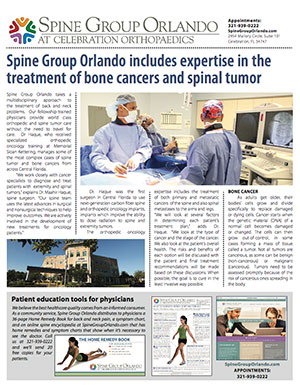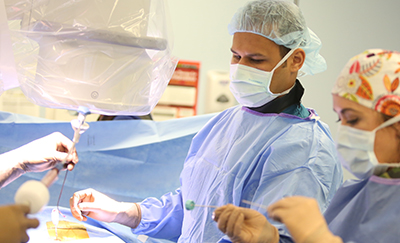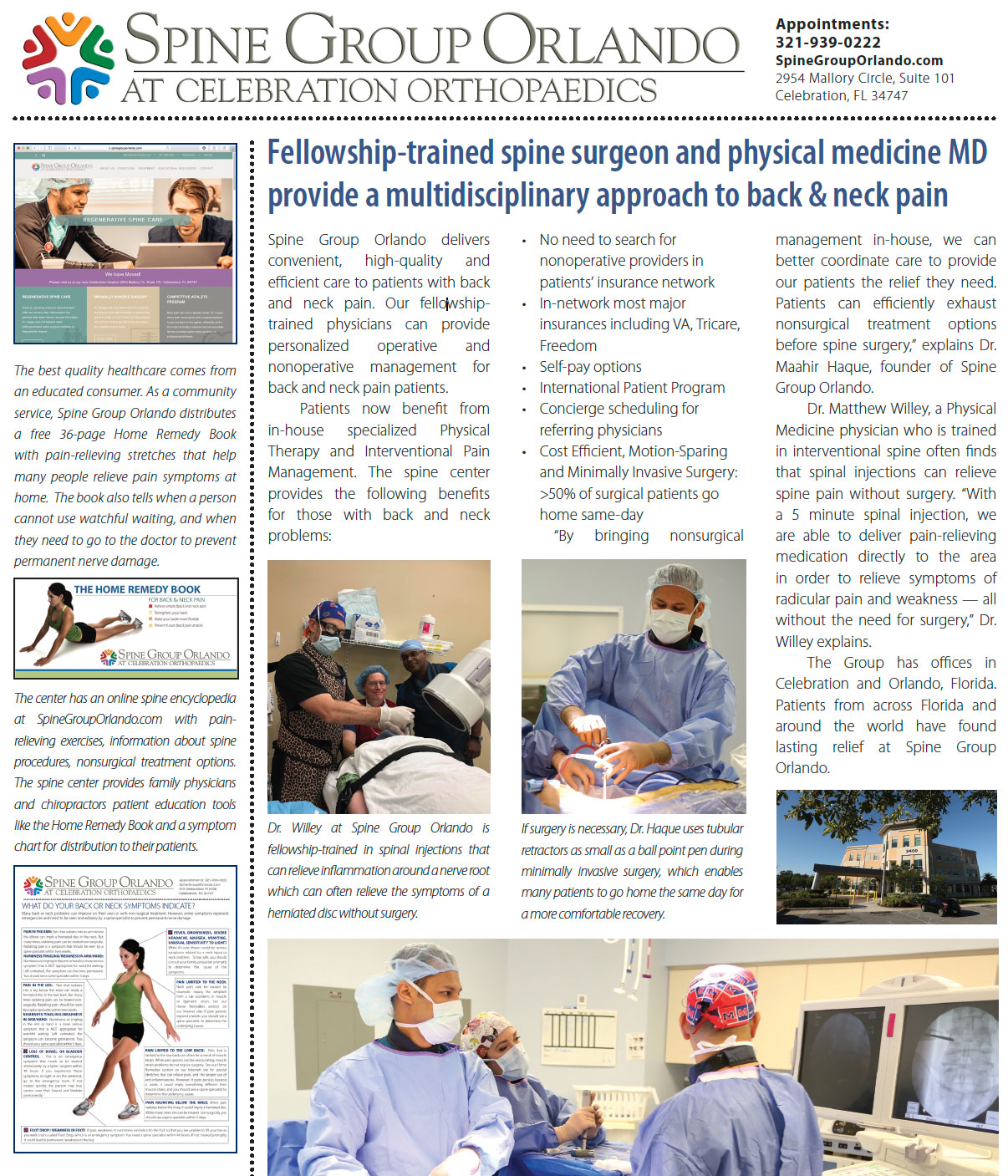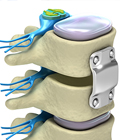 Kyphoplasty
Kyphoplasty
Overview | Causes of Compression Fractures | Risks and Complications | Surgery | Bone nailing / pinning | Post surgery
Overview
Spine Group Orlando is proficient in Kyphoplasty for cancers in the spine. Kyphoplasty surgery is a procedure designed to stop the pain caused by a spinal fracture. This minimally invasive procedure fills the fractured bone with cement to relieve back pain caused by vertebral compression fractures.
Most common cause of compression fractures is osteoporosis, however other causes include tumors, infection and trauma. 
Balloon kyphoplasty consists of a surgeon passing a balloon into the vertebral body and is inflated to provide room for the special cement. The liquid cement is inserted which quickly hardens. This procedure is usually repeated on the other side of the back. It is routine for the surgeon to collect a bone specimen (biopsy) studies to make sure the bone does not have evidence of tumor or infection.
Balloon kyphoplasty: A minimally invasive procedure that fills the fractured bone with cement and relieves back pain
Vertebral body: the bones in the back
Compression fracture: A flattening of the bones in the back which usually cause significant pain
What Are The Causes Of Compression Fractures?
Most common cause of compression fractures is osteoporosis, however other causes include tumors, infection and trauma.
How Is This Diagnosed?
- Your doctor will obtain a thorough history and examine your spine and your strength, reflexes and sensations.
- Your doctor may order imaging tests to look at the spine.
- CT (computed tomography): you will be placed in a scanner for a brief period of time. This pictures show the fractures in the bone very well.
- MRI (magnetic resonance imaging): this produces images using a magnet and radio waves. These pictures show the muscles, and nerves very well, and allow the physician to determine if the fracture is new or old.
Risks And Possible Complications
As with any surgery there are small, but possible complications. For kyphoplasty these include:
- Weakness, numbness, new or worse pain
- Paralysis
- Blood clots in the lungs
- Infection
- Additional bone fractures
- Bleeding
- Pneumothorax–air leak into the chest cavity.
There Are 4 Possible Outcomes From Any Surgery
- Your symptoms or pain may be completely improved.
- Your symptoms or pain may be partially improved.
- Your symptoms or pain may be the same as before surgery.
- Your symptoms or pain may be worse than before surgery.
Surgery
The surgeon makes a 3 mm incision on one side of the back and a small tube is passed into the bone using x-ray guidance. Next a balloon is passed into the vertebral body and is inflated to provide room for the special cement. The liquid cement is inserted which quickly hardens. This procedure is usually repeated on the other side of the back. It is routine for the surgeon to collect a bone specimen (biopsy) studies to make sure the bone does not have evidence of tumor or infection. The procedure takes 45 minutes to 1 hour for a single level. Patients usually go home the next day.
Bone nailing / pinning
Bone pinning is a type of surgery to fix a broken (fractured) bone. Another name for bone pinning is fracture repair and internal fixation. Percutaneous pinning is a technique used by orthopedic surgeons for the stabilization of unstable fractures. Percutaneous pinning involves inserting wires through a person’s skin for stabilizing the fractured bone. Bone nailing uses pins, screws, or plates to help hold broken bones together so they can heal correctly. One of the current tenets of orthopedic fixation is bones heal better if the fracture fragments are pressed firmly together.
After Surgery
You may have some soreness at the incision site immediately after surgery and will be encouraged to rest. However, you will be encouraged to walk the next day. Some patients may be encouraged to wear a lumbar brace for back support as the back heals.
[top]
Maahir Haque, MD is recognized as a leader in the field of minimally invasive spine surgery. At Spine Group Orlando, Dr. Maahir Haque also provides second opinions for spine surgery and MRI reviews for those with back pain and neck pain. Dr. Haque emphasizes non-surgical options for back pain and neck pain where possible. This can include accessing a back pain specialist with expertise in pain-relieving spinal injections and spine therapists. Spine therapy can include back stretches that can be a future home remedy for back pain or neck pain. If spine surgery is necessary because of a herniated disc, spinal fracture, or spinal stenosis, Dr. Maahir Haque operates through tubular retractors that reduce the size of the incision, lessen blood loss, reduce time in the hospital, speed return to activity with a less painful recovery. This spine surgery expertise enables many patients to have outpatient spine surgery and be home the same day. Spine Group Orlando and Dr. Maahir Haque provides artificial disc replacement in the neck using the Mobi-C disc implant, the first FDA-approved disc for multiple levels in the neck. Prodisc-C is also used for artificial disc replacement in the cervical spine. Dr. Haque is also one of the few spine surgeons in Orlando, Florida to provide lumbar artificial disc replacement using the Prodisc-L artificial disc. Dr. Haque is also referred patients from across Orlando and north central Florida for artificial disc replacement surgery as an alternative to spinal fusion. Accordingly, Dr. Haque's patients travel from across north central Florida, including: Orlando; Jacksonville; Tallahassee; Lakeland; Gainesville; Tampa; Daytona Beach; and Cocoa Beach. The spine center, as a destination for medical tourism for some international patients from Mexico and the Caribbean, can provide recommendations to out-of-town patients on nearby hotels and tourist attractions. Dr. Haque is featured on the national site CentersforArtificialDisc.com as an author on the subject of artificial disc replacement for herniated discs in the neck. The Centers for Artificial Disc web site has content specific to disc replacement options and alternatives to spinal fusion. Click here to visit the Centers for Artificial Disc.








